Low country leadership on smart growth

Posted March 3, 2008 at 4:19PM

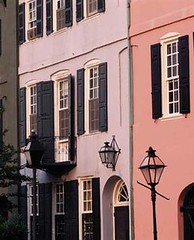 Historic Charleston, South Carolina is one of the most beautiful cities in the world. It is characterized by palmettos, live oak trees, graceful homes on classic streets, stately “low country” architecture and, yes, southern charm.
Historic Charleston, South Carolina is one of the most beautiful cities in the world. It is characterized by palmettos, live oak trees, graceful homes on classic streets, stately “low country” architecture and, yes, southern charm.
But Charleston, like every other American city, has tons of sprawl on its outskirts and plenty of areas in town that have fallen on hard times. My friend Dana Beach is making a career out of changing that with the organization he founded, the Coastal Conservation League. And the work that Dana and others, including Charleston’s visionary mayor, Joseph P. Riley, have been doing is starting to pay off. In particular, the League’s website refers to the area of Charleston called “the Neck” as the area’s “most promising arm of smart growth.” (Knowing Dana, I’m betting that he referred to the Neck as an “arm” on purpose.)
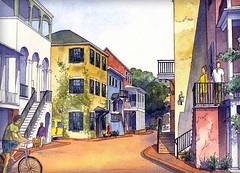 One of the best redevelopment projects in the Neck is Mixson, which is putting over 900 homes and 150,000 square feet of shops, offices, and amenities on a 44-acre tract in North Charleston. That effectively displaces what would likely be the development of around 300 acres of countryside if it had been built on the fringe to typical sprawl dimensions. The architecture, as you can see in the renderings accompanying this post, is superb, with many of the classic old-world features, such as arches, balconies and porches, that have come to characterize the best of Charleston's built environment.
One of the best redevelopment projects in the Neck is Mixson, which is putting over 900 homes and 150,000 square feet of shops, offices, and amenities on a 44-acre tract in North Charleston. That effectively displaces what would likely be the development of around 300 acres of countryside if it had been built on the fringe to typical sprawl dimensions. The architecture, as you can see in the renderings accompanying this post, is superb, with many of the classic old-world features, such as arches, balconies and porches, that have come to characterize the best of Charleston's built environment.
The project, which will include affordable units and comprise a diversity of housing prices and types including apartments, condos, townhomes and detached single-family homes, is poised to be walkable and diverse. 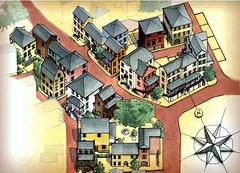 In awarding the project one of its 2008 “Charter Awards,” the Congress for the New Urbanism wrote that “key features of this project include its focused growth around transportation spines in its plan to push for streetcar or light rail within the region . . . narrow streets, courtyards, pocket gardens, and plazas comprise the public realm, providing great opportunity for meeting neighbors while maintaining a charming intimacy.” The developer has also pledged to use green design techniques, so that every home will meet the environmental standards for certification by the US Green Building Council.
In awarding the project one of its 2008 “Charter Awards,” the Congress for the New Urbanism wrote that “key features of this project include its focused growth around transportation spines in its plan to push for streetcar or light rail within the region . . . narrow streets, courtyards, pocket gardens, and plazas comprise the public realm, providing great opportunity for meeting neighbors while maintaining a charming intimacy.” The developer has also pledged to use green design techniques, so that every home will meet the environmental standards for certification by the US Green Building Council.
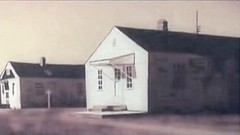 Prior to the Mixson project, the site was occupied by government buildings erected in World War Two that had been converted to public housing and that had become dilapidated (see photo). Perhaps the new project’s most significant challenge was finding satisfactory homes for the buildings' residents, which by every account I have seen was handled with great respect and assistance. There’s a short history of the development here.
Prior to the Mixson project, the site was occupied by government buildings erected in World War Two that had been converted to public housing and that had become dilapidated (see photo). Perhaps the new project’s most significant challenge was finding satisfactory homes for the buildings' residents, which by every account I have seen was handled with great respect and assistance. There’s a short history of the development here.
But even better are two very well-produced (but not slick) videos. The first uses imagery and people involved in the neighborhood and/or with Mixson to show the philosophy of the project, explaining how it relates to the existing neighborhood and its smart-growth and new-urbanist values.
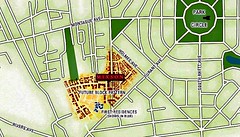 The second describes Metamorphosis, an art project in which neighborhood residents, local artists and school children were invited to display and create works of art in the old buildings before they were torn down. It looks to me like they had a heck of a party, too.
The second describes Metamorphosis, an art project in which neighborhood residents, local artists and school children were invited to display and create works of art in the old buildings before they were torn down. It looks to me like they had a heck of a party, too.
For the rest of the week, I’ll be in New Orleans to attend concurrent national meetings relating to social equity and long-range land use and transportation planning. No more blogging this week, but I suspect the meeting will provide lots to write about. I’ll have my ears set to one of the country's cultural treasures, WWOZ, while I’m in NOLA.